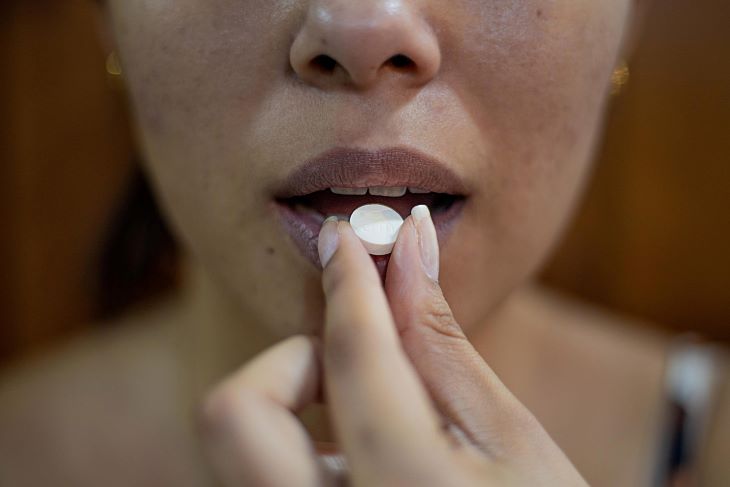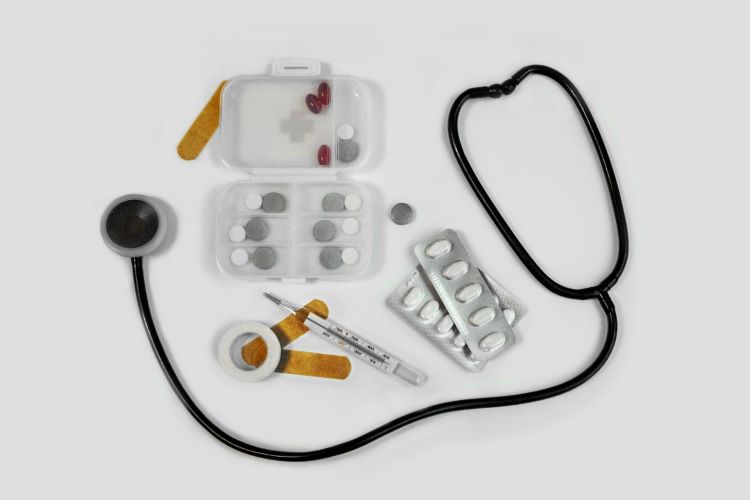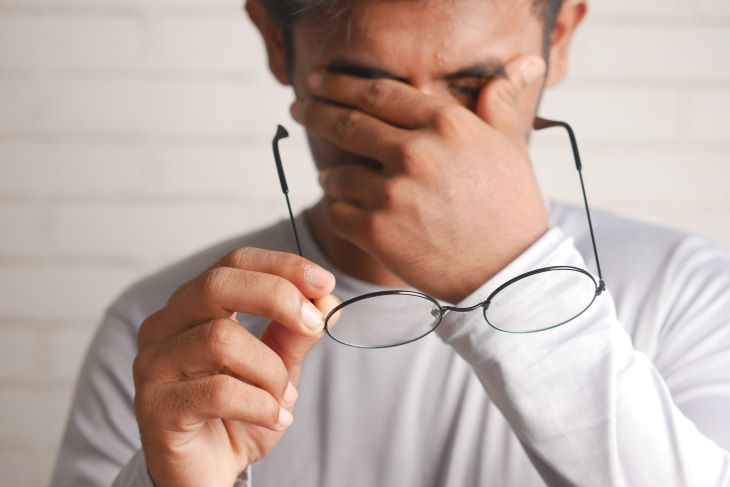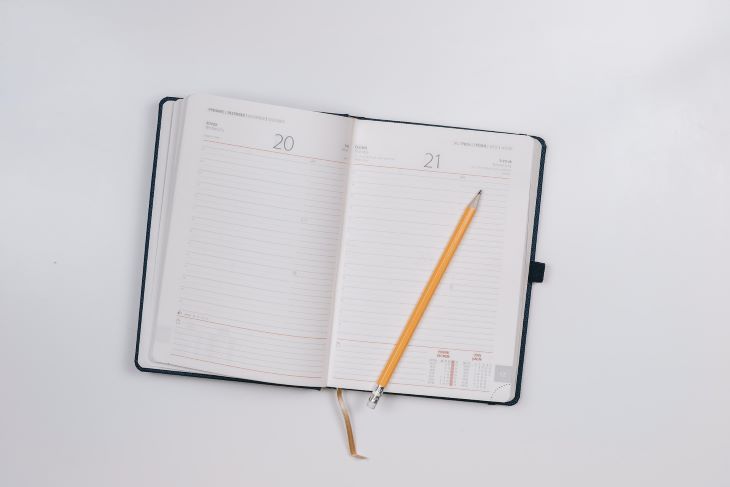Restoril, the brand name of the drug Temazepam, is a benzodiazepine.
This branch of medicinal drug is most commonly used as a treatment for insomnia, but can also be used to relax patients before medical or dental operations, thanks to its sedative properties.
The drug works by causing a spike in gamma-aminobutyric acid (GABA) in the brain.
It is this chemical which produces the calming effects of Restoril, targeting the synapses between neurons and inhibiting the transition of pain signals across them [1].
Restoril is only available as a prescription medication, and this is largely due to its high abuse potential.

The potential for individuals to become addicted to Restoril exists as a result of how the brain and body react when subjected to consistent doses of GABA.
At Rehab 4 Addiction, we offer free advice from a team of non-judgemental professionals, many of whom are in recovery and understand how hard can be to change your relationship with addiction.
For more information about Restoril rehab, simply reach out to our 24/7, confidential hotline on 0800 140 4690.

The brain contains a very complicated chemical reward system, remembering actions that produce both positive and negative responses, and influencing behaviour according to this information.
It is this reward system that, over time, leads to addiction.
When GABA is released following Restoril use, the brain registers the cause-and-effect relationship between the drug and the feelings of relaxation and peace that it has caused.
As consumption continues, this positive relationship is reinforced.
This process continues until, when Restoril is not taken, the brain struggles to compensate for the steep decrease in GABA levels.
Its reward system means that it craves the calm effects of the drug again, and it uses the association to push individuals back to Restoril.
Looking at this from a more human angle – an individual experiences anxiety and emotional lows when they suddenly stop using Restoril.
In order to combat these effects and feel as relaxed as they usually do, they feel compelled to take the drug again.
At this point, an individual is said to have a psychological dependence on Restoril.

A very similar process happens in the body. As the drug is taken time and time again, the body’s chemical and hormonal systems become increasingly used to its presence.
It develops a tolerance for the drug, meaning the same dosage has less noticeable effects.
In order to combat this, individuals feel inclined to take more Restoril.
They achieve the same effects again, and this further pushes the body to adjust to and accommodate for higher levels of the drug.
The problem, however, is that their tolerance increases further.
Over time, these physical changes are pushed so far that the body and its systems rely on the presence of high levels of Restoril to function normally.
Being sober, therefore, sparks fluctuations and difficult withdrawal. This is known as a physical dependence.

When taking Restoril on a regular basis, it is not an inevitability that an individual will become dependent on it.
The drug carries an abuse risk, not a guarantee. Every person’s susceptibility to forming a dependency is influenced by various things known as risk factors.
At Rehab 4 Addiction, we offer free advice from a team of non-judgemental professionals, many of whom are in recovery and understand how hard can be to change your relationship with addiction.
For more information about Restoril rehab, simply reach out to our 24/7, confidential hotline on 0800 140 4690.

The traits that we inherit from our parents influence how our body and brain function, as well as how they respond to certain stimuli.
Our genetics are not a factor that determines addiction development, but instead subtly increases the risk for some people.
A high risk exists for those whose genetics influence, for example, the way the brain is affected by Restoril, the body’s experience of withdrawal, and the susceptibility of an individual’s behaviour to change due to their neurological reward system.

Science continuously disputes the superiority of nature or nurture over human behaviour, and environmental factors pull a lot of weight.
The way we are raised, the location of our childhood, our early influences – they all influence behaviour and attitudes.
If an individual is raised by parents who use drugs like Restoril on a regular basis, talk about them like they are normal substances to use, and hide the negative effects, they will be more likely to abuse them in adult life.
Additionally, if an individual grows up in a neighbourhood, town, city, or culture that celebrates or enables the use of drugs like Restoril, they will be more inclined to use them to an extent that increases the abuse risk.

Because of Restoril’s impact on the brain, the state of an individual’s mental health prior to consumption is a really important risk factor in how likely an unhealthy habit is to develop.
Dual diagnosis is very common among substance abusers, as those with mental health issues are more greatly incentivised to use drugs as they sedate their negative symptoms.
Those with anxiety, depression, and trauma, for example, are at higher risk.
At Rehab 4 Addiction, we offer free advice from a team of non-judgemental professionals, many of whom are in recovery and understand how hard can be to change your relationship with addiction.
For more information about Restoril rehab, simply reach out to our 24/7, confidential hotline on 0800 140 4690.

Interactions with friends, family, and co-workers can steer behaviour in unhealthy ways.
If we hang around with others who use drugs like Restoril, talk about their benefits, and don’t discuss the associated risks, we can be more likely to use them as well.
Peer pressure can also play a part. If our friends have a strong influence on us, or are likely to criticise us if we do not follow suit, Restoril abuse can be a way to gain respect or avoid attracting the wrong attention.

Using Restoril on a regular basis can have serious impacts on health and wellbeing. Some of the most common side effects include:

When it comes to stopping Restoril consumption, individuals face the biggest and most dangerous obstacle: withdrawal.
Physical dependency means that the body reacts aggressively to suddenly being sober, and this results in an array of unpleasant symptoms.
Restoril withdrawal can manifest as both physical and psychological symptoms, and some of the most common include:

If an individual consumes Restoril to such an extent that they experience the side effects of addiction and cannot stop their consumption for the fear of withdrawal, they must undergo Restoril rehab.
The word ‘rehab’ can spark fear, and it is perfectly normal to have anxiety about going into addiction treatment.
Learning more about Restoril rehab can help to calm these doubts, however, because the process is much simpler than many often fear.
At Rehab 4 Addiction, we offer free advice from a team of non-judgemental professionals, many of whom are in recovery and understand how hard can be to change your relationship with addiction.
For more information about Restoril rehab, simply reach out to our 24/7, confidential hotline on 0800 140 4690.

The first part of Restoril rehab is detox. Withdrawal and the body’s insatiable demand for regular doses of the drug are the biggest obstacles to getting sober, and so an individual’s physical dependency on Restoril is the first thing that must be tackled.
Detox does this by carefully reducing the quantities of Restoril that the body consumes.
Doctors oversee the process, weaning the body in a procedure that minimises the risk of causing a sudden, violent response to the decreasing dose.
When withdrawal symptoms occur, detox is well prepared.
While it might seem illogical to prescribe a new benzodiazepine, small doses can help reduce symptoms and give individuals the relief to continue with their treatment.

After detox, the second stage of Restoril rehab is therapy. While the body can be weaned of its cravings for the drug, the brain’s associations with Restoril and pleasure still exist.
This, as well as an individual’s personal motivations for abusing the drug, must be worked through.
Therapy can achieve this in a number of ways. Sessions can adapt their form and focus to accommodate for the variety of different triggers that can spark and sustain addictive behaviour.
The goal is always to alleviate their grip on an individual’s actions.
Some of the most popular therapy methods include:

Once physical and psychological wellbeing has been improved to such a point that an individual feels no immediate demand for Restoril, the final stage of detox seeks to prolong that feeling.
This is done through relapse prevention. There are a number of techniques that can be used here.
Individuals can prepare plans for handling triggers; set themselves reminders to make sure they aren’t hungry, tired, or in need of social contact; or arrange supportive talks with family and friends who want to help.
At Rehab 4 Addiction, we offer free advice from a team of non-judgemental professionals, many of whom are in recovery and understand how hard can be to change your relationship with addiction.
For more information about Restoril rehab, simply reach out to our 24/7, confidential hotline on 0800 140 4690.

Going through Restoril rehab within a residential treatment programme – staying within provided accommodation and undergoing detox and therapy entirely within a treatment facility is the safest way to combat addiction. But why is this?
As noted above, it is the recommended form of treatment primarily because of its safety factor.
Within a facility, there are a range of safeguarding factors which prevent individuals from coming to harm during the process.
Medical professionals are always monitoring progress, and if physical or mental health appears to be at risk, then they can step in.
They’ll then either slow the pace of detox, provide medication, or ease the pressure of therapy sessions.
This also provides the advantage of making rehab as effective as possible.
Access to addiction experts improves the chances of a condition being worked through successfully, and it also reduces the risk of relapse following treatment.
The final benefit pertains to focus. Separated from the demands of work, family, and social life, individuals have unrivalled time and space to engage with their Restoril addiction.
This improves engagement, concentration, and long-term lifestyle changes.

Coming to the end of Restoril rehab should be a proud moment, and individuals who succeed in establishing physical and mental independence from the drug should relish in their achievement. However, they must also know that their journey has not yet ended.
Next comes aftercare, an important stage of recovery that can easily be overlooked.
It involves an individual continuing to access help and support while they carry on with their lives, getting therapeutic and physical health treatment.
Aftercare can be pivotal in many aspects for ongoing treatment.
It can ensure that triggers continue to be effectively managed, support networks are maintained and kept functional, and physical health is kept to a high standard.

When faced with Restoril rehab, everyone can have similar doubts and queries. Here are some of the most commonly asked questions about treatment.
At Rehab 4 Addiction, we offer free advice from a team of non-judgemental professionals, many of whom are in recovery and understand how hard can be to change your relationship with addiction.
For more information about rehab, simply reach out to our 24/7, confidential hotline on 0800 140 4690.

This question arises most often from a concern for how long an individual can expect to be away from their family, friends, and job.
Knowing how long Restoril rehab takes can also help with the arrangement of time off.
Generally speaking, rehab lasts 28 days. 7 days are spent in rehab, and 21 are spent in therapy.
That does not mean, however, that everyone’s experience is the same.
Those with more severe dependencies, a lack of motivation, or another mental health condition (dual diagnosis) might find that their rehab journey takes longer than 28 days.

The price of rehab can be a big concern, as individuals will either need to consult their budget or assess what options they have for accessing council funding.
This question is slightly more complicated, however, as Restoril rehab prices can differ.
28-day rehabs, for instance, can cost between £8,000 and £12,000 for a single room, or about £6,000 for a multi occupancy room. 10-day detoxes similarly vary from £3,000 to £6,000 for a single room, and £2,000 to £4,000 for a multi occupancy room.
Individuals also have the option of home detox programmes which cost around £1,500.

When the price and duration of Restoril rehab are discussed, there can come a moment when an individual asks themselves if they really need treatment. Is it worth the money, the time, and the effort?
It can be really difficult to identify addictive traits in your own behaviour, but one useful technique is the CAGE questionnaire.
If you ask yourself the following four questions and find yourself answering ‘yes’ to them, you may need rehab:

Possibly the only thing more distressing than realising that you need Restoril rehab is suspecting that someone you care about might be struggling.
It is normal in this situation to want to help them, but how can you be sure that it’s addiction?
There are warning signs which might indicate that Restoril consumption has ventured into unhealthy territory.
Looking out for these in your loved one’s behaviour can help you to determine whether they need support.
Such warning signs include:

Recognising that a friend or loved one is struggling with Restoril addiction is one thing, but acting on this is an even greater challenge.
How can you ensure that they get the help they need, and how can you do it in a supportive, non-intrusive way?
At Rehab 4 Addiction, we offer free advice from a team of non-judgemental professionals, many of whom are in recovery and understand how hard can be to change your relationship with addiction.
For more information about rehab, simply reach out to our 24/7, confidential hotline on 0800 140 4690.

A simple approach is to try and spark up a conversation about your loved one’s increased Restoril consumption.
In a gentle and genuinely interested manner, enquire as to whether they themselves have noticed or deliberately influenced their increased consumption.
This conversation must be conducted in a supportive manner. Speak from a place of concern and curiosity.
If they start to open up, suggest that they seek help to ensure they do not come to harm as a result of their excessive usage, and even offer to help them do that.

If you anticipate resistance to a one-to-one discussion, consider an intervention.
This will require you organising your loved one’s closest friends and relatives to meet and speak about how the Restoril addiction has become a widespread problem.
Executing an effective intervention is really hard. Everyone must be prepared to speak in a supportive yet constructive way.
The group must work and speak as a single unit in order to communicate the scale of the individual’s problem and the need to seek help.
Interventions can be described as delicate. If an individual rejects the group’s concerns, consequences must be established to steer them towards facing the fact that Restoril rehab is needed.
Scare tactics do not work [2], so an individual must decide for themselves.

If a single event proves impossible to arrange, interventions can be approached in a different way.
Family and friends can work separately yet in unison to influence an individual’s behaviour to direct them towards healthier living.
CRAFT functions to create a reward system that replaces the unhealthy version an addicted individual already has.
It works by family and friends rewarding sobriety and attending treatment, while punishing behaviours that reinforce addictive behaviour.
Over time, the objective is for an individual to see the benefits of sober living and take the step themselves to seek rehab.

Beating Restoril addiction is hard enough without mental health conditions being taken into consideration.
If an individual experiences anxiety, depression, trauma, bipolar disorder, or another condition as well as their addiction, it can make the recovery process very complex.
The recognition of the co-existence of these problems is really important for successful Restoril rehab.
Known as dual diagnosis, being able to identify how addiction and mental health complications interact is essential for providing long-term recovery.
These two conditions can both cause and result from the other.
Addiction can spark anxiety or depression as a side effect or withdrawal symptoms of sustained Restoril use, or these conditions can provide the motivation for abusing the drug in the first place.
Dual diagnosis, therefore, is really important for treating mental health both as a symptom of addiction and its potential trigger.

Restoril’s effect on the body must not be allowed to reach such high levels that it slows its functioning and triggers overdose.
This can be incredibly dangerous, and individuals will need immediate medical care.
It can be tough to spot when someone has overdosed on Restoril, but there are some signs which indicate when the body is struggling to process the dosage they have consumed. These include:
It’s really important to recognise Restoril overdose because it can be life-threatening.
The drug’s slowing effect can inhibit breathing and blood flow to the point that an individual’s life can be in danger, with comas and seizures being a common symptom.
If you identify someone who has overdosed on Restoril, it is important that you react in the appropriate way.
In order to be as effective as possible, you will need to:

Developing a Restoril addiction might happen without you even realising, but once you learn about the warning signs, side effects, and risk of overdose, it is normal to want to get help.
But how can you possibly navigate the world of addiction treatment for the first time?
At Rehab 4 Addiction, we are well equipped to support you in getting the help that you or your loved one need.
Our team can explain the details of Restoril rehab, direct you to possible treatment options, or be a pair of ears for you to talk through your worries.
We offer free advice from a team of non-judgemental professionals, many of whom are in recovery and understand how hard can be to change your relationship with addiction.
For more information, simply reach out to our 24/7, confidential hotline on 0800 140 4690.
